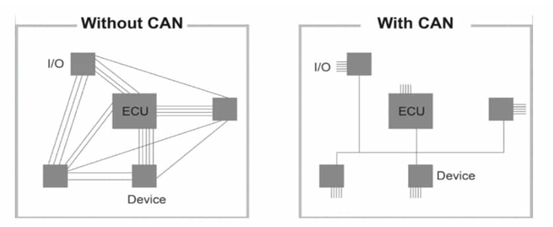From Bits to Blocks: Understanding Blockchain for IoT
Introduction
Blockchain for IoT is an emerging technology paradigm that combines the distributed ledger capabilities of blockchain with the vast network of interconnected IoT devices.
Blockchain technology is a distributed and secure digital ledger that records transactions across a network of computers. It uses cryptographic techniques to ensure data integrity and immutability. Each transaction is linked to the previous one, forming a chain of blocks. This technology offers transparency, decentralization, and security, making it valuable for various applications, including healthcare, food safety, and supply chain/logistics.
While IoT devices continue to rapidly scale, it has several challenges to address to reach its full potential. These challenges include costs for IoT devices and connectivity, limited interoperability, and security. Security is a major concern given IoT devices, with varying levels of security, are targeted by hackers for Distributed Denial of Service (DDoS) and other attacks.
Key Benefits
Using Blockchain for IoT offers several benefits to the challenges faced by existing IoT ecosystems:
- Security and Trust:
Immutable Record: Blockchain creates an unchangeable ledger of transactions, making it highly secure and tamper-proof. Blockchain provides an additional security layer to ensure the integrity of data generated by IoT devices.
Decentralization: Traditional centralized systems are vulnerable to single points of failure. Blockchain’s decentralized nature eliminates this vulnerability, making it more resilient to attacks.
Smart Contracts: Smart contracts, self-executing contracts with the terms of the agreement directly written into code, can automate and enforce IoT device interactions, reducing the risk of fraud or human error.
- Data Integrity: Blockchain provides a transparent and auditable history of data transactions. Users can trace the origin and history of IoT data, ensuring its authenticity.
- Interoperability:
Standardization: Blockchain can serve as a common platform for different IoT devices and applications to communicate and transact, enhancing interoperability within IoT ecosystems.
- Privacy and Data Ownership:
User Control: Blockchain allows users to have more control over their IoT data. They can grant or revoke access to their data as needed, enhancing privacy and data ownership.
Confidentiality: Blockchain can support private transactions and data sharing, ensuring that sensitive IoT data remains confidential.
- Reduced Costs: Blockchain can reduce costs associated with intermediaries in IoT ecosystems by enabling peer-to-peer transactions and automating contract execution.
Use Cases
Supply Chain Management: Transportation
Blockchain can be used to create transparent and traceable supply chains, helping verify the authenticity of shipments and products and monitor their journey from manufacturer to end consumer.
Tracking shipments being transported by different logistics companies and modes of transport can be challenging for existing IoT systems. Blockchain can store real-time tracking data, temperatures, departure and arrival times, and the companies involved across this supply chain event to provide a comprehensive data set for shipments throughout the supply chain.
Asset Tracking
IoT devices are extensively used to track assets, such as vehicles, trailers, and construction equipment, to collect data related to location, condition, and status. Blockchain can be used to create an asset’s digital identity and can automate notifications. For example, when an OBDII device reports that a vehicle’s engine temperature is too high, a smart contract could trigger an automated maintenance request.
Other
Other IoT use cases that may benefit from blockchain integration include smart cities, healthcare data management, food safety, energy management, and environmental monitoring.
Challenges
Scalability: Scalability remains a challenge for blockchain technology. While many IoT devices generate a vast amount of data, not all blockchain networks can handle this scale efficiently. The difficulty of scaling a blockchain is mainly due to its consensus mechanism since it requires all participants in the network to agree on which transactions are valid. Solutions like sharding and layer 2 networks are being explored to address scalability concerns.
Integration Complexity: Integrating blockchain with existing IoT systems can be complex and costly. As an example, many IoT applications require real-time or near-real-time data processing. Traditional blockchains may introduce latency due to their consensus mechanisms and block confirmation times.
Regulatory Compliance: Data stored on blockchains will need to comply with various data protection and privacy regulations, such as the General Data Protection Regulation (GDPR), adding a layer of complexity to IoT deployments.
Conclusion
Blockchain for IoT is an exciting area of innovation that holds promise for enhancing the security, privacy, and efficiency of IoT ecosystems. However, it’s in its early stages of being considered for the IoT applications given it’s still a nascent technology for this market and requires careful consideration to aligning Blockchain deployment with the right use cases given its current challenges.
Positioning Universal continuously monitors relevant technological advancements, including the use of blockchain technology, in our constant quest to improve the quality of the telematics services we provide to our customers.

Author
Aiza LamugRelated posts
Overcoming IoT Implementation Challenges: Tips for a Successful Deployment
Introduction Kevin Ashton, MIT’s Executive Director of Auto-ID Labs, officiall
Industry 4.0 and IoT: The Impactful Role of IoT
Introduction Industry 4.0 is in the early stages of reinventing how companies
Revolutionize Your Fleet Management with Positioning Universal’s Cutting-Edge Mobile IoT Solutions: Harnessing the Power of the CAN Bus Network
Positioning Universal’s cutting-edge Mobile IoT solutions redefine the way you



